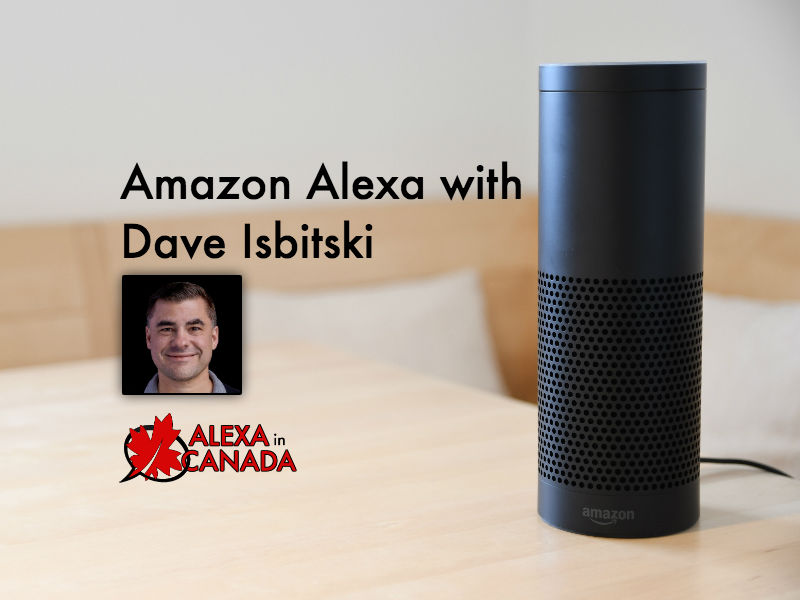In this episode, Teri welcomes Dave Isbitski, Chief Evangelist of Alexa and Echo at Amazon, and voice-technology and natural language understanding educator.
Welcome Dave Isbitski!
As a child who grew up with a healthy serving of 1980’s sci-fi films in his entertainment diet, Dave Isbitski naturally believed that technology was the way forward. This started him off on a winding path that led to where he is today. In the 1990’s, he offered consulting services to corporate companies. He then worked as a technical evangelist for Microsoft, in the Pharmaceutical sector. In 2008, he was asked to start a community to teach people new software. He was the liaison between engineers and developers and the marketing team. His goal was to demystify and explain software to the average “lay person.” In 2013, Amazon entered the picture. Amazon showed Dave the Kindle Fire tablets and asked him to work his magic like he had done for Microsoft. He built a community around Android apps, the Amazon TV and the Fire phone. Finally, in 2014, Amazon showed him the seed of the gadget that would become the Echo… and the rest is history.
What does it mean to be a Chief Evangelist?
The Chief Evangelist at Amazon (i.e. Dave Isbitski!) has two main roles. It’s part Chief Educator and part Chief Advocate. It’s about what needs to be created and what’s missing. There are three very separate components to the whole process:
1. Support the product when it’s out in the world.
2. Take the time to travel and teach and get feedback on the products.
3. Bring all the feedback back to the developers for improvement. Then it’s rinse and repeat.
Why do some features take time to come to Canada, even though it’s the same language as the US?
The language is not actually the same in Canada and the US, at least as far as the language models go behind Alexa. It’s very easy to forget how sophisticated the computer science behind Alexa is. At the base of it all, there’s a language model. In it, several processes come into play. The first component in this model is the Automatic Speech Recognition (ASR). This includes dialects, pronunciation changes, etc. Behind ASR, there is a larger, more abstract process called Natural Language Understanding (NLU). A third component is that in order to teach Alexa to respond to simple utterances like “how many calories will I lose if I run for an hour?”, developers create intents. There are many intents that can lead to the same response. Based on the previous example, one could also ask ” How many calories will I lose if I run for sixty minutes?” Here you have two different intents that lead to the same answer. Keep in mind that in this example, this is still in the same language, in the same dialect and in the same region. When you factor in different dialects, new locations and new cultures (i.e new countries), it takes time to develop accurate language models for each country. The last thing Amazon wants is to have it appear that Alexa is a tourist in a country outside of the US. The language model must be right before Alexa can have each of the features in the different countries.
What does “Alexa Everywhere” mean?
What Amazon really means is “conversation everywhere.” Alexa is becoming so natural, and that is what Amazon is most proud of. It’s not really about having her everywhere; it’s about being able to have a conversation everywhere. This will naturally lead to people having more than one Echo device. In fact, the Amazon team has actually come up with a technology called Echo Spatial Perception. Based on the sound waves your voice produces, Alexa will be able to figure out which device got the best reception of your command (i.e. the closest device) and switch to that device.
What is Amazon’s approach to privacy with this device?
From the start, people have been concerned about privacy. Amazon’s approach is to let people decide how they want to use the technology. They have given people many options to protect their own privacy. When you mute the Echo, it’s muted at the silicon level, so there’s no possibility of hacking the software to un-mute it. You can set pass-codes to make purchases, calls, etc. Also, Alexa is not recording all the time. Alexa only starts recording when it hears the wake word. Lastly, if none of these work for you, you can call Amazon and have them delete all the data Alexa has gathered through conversations with you.
Where are Amazon and Alexa taking us?
Dave’s personal opinion is that in the future when you are speaking to your grand-kids about how much time you used to spend in front of screens, they’ll laugh. They’ll laugh because how obtrusive our current technology is. The future is that conversation will bring back some of that humanity that we have lost. Talk is inclusive. It’s super early, but we are beginning to see the change.
A big thanks again to Dave Isbitski for joining us on the podcast!












![Celene Osiecka of [24]7 on the Voice in Canada Podcast](https://voiceincanada.ca/wp-content/uploads/2021/10/Celene-Osiecka-of-247-on-the-Voice-in-Canada-Podcast-1.jpg)